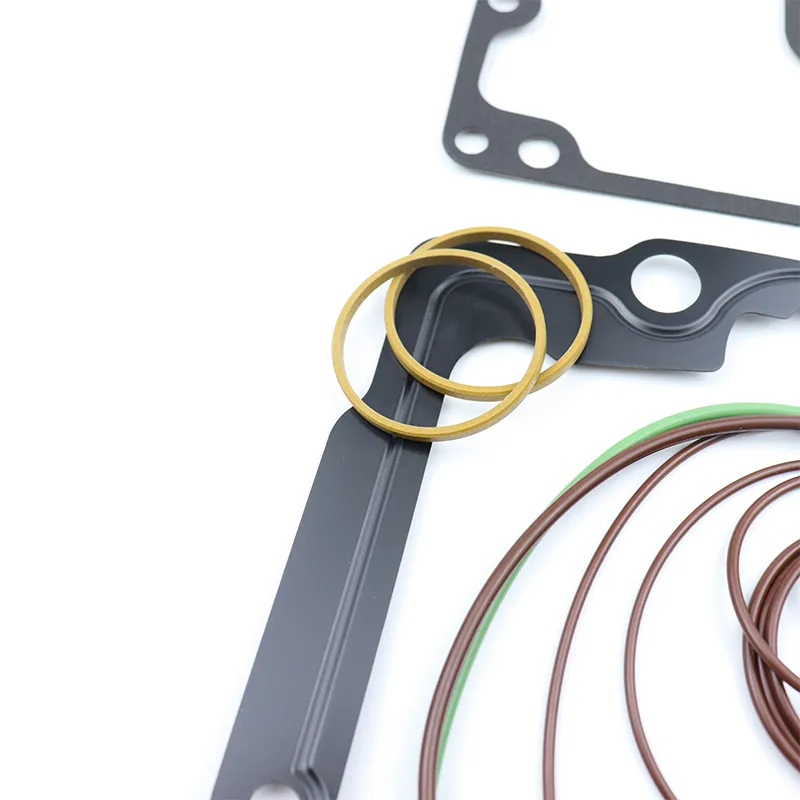gru . 03, 2024 16:10 Back to list
wheel bearing grease seal
Understanding Wheel Bearing Grease Seals
Wheel bearings play a crucial role in the smooth operation of vehicles, allowing the wheels to rotate with minimal friction. Integral to the function and longevity of these bearings are grease seals. In this article, we’ll delve into the importance of wheel bearing grease seals, their construction, types, maintenance, and how to choose the right one for your vehicle.
What Are Wheel Bearing Grease Seals?
Wheel bearing grease seals are designed to retain lubricating grease within the wheel bearing assembly while preventing dirt, moisture, and contaminants from entering. By maintaining the proper lubrication within the bearings, these seals help ensure optimal performance, reducing wear and tear, and prolonging the life of the bearings.
Construction of Grease Seals
Typically, grease seals consist of a few critical components a sealing lip, a spring, and a metal or polymer body. The sealing lip is the primary component that makes contact with the rotating shaft, creating a barrier to prevent leaks. The spring exerts pressure on the seal, ensuring it maintains contact with the surface as it wears down over time.
The material used in the construction of the seal is equally important. Common materials include rubber, silicone, and thermoplastic elastomers, each offering different levels of resistance to heat, chemicals, and wear. The choice of material often depends on the specific operating conditions, such as temperature fluctuations and exposure to contaminants.
Types of Grease Seals
There are several types of grease seals used in wheel bearings
1. Single Lip Seals These seals have one sealing lip and are suitable for applications where light contamination is expected. They are simple in design and installation but may not provide sufficient protection in harsh environments.
2. Double Lip Seals Featuring two sealing lips, double lip seals offer enhanced protection against contaminants and are ideal for applications where exposure to dirt and water is a significant concern. They effectively keep the grease in while preventing any external elements from entering.
3. Spring-Loaded Seals These seals have a spring that keeps the sealing lip in constant contact with the shaft, providing an additional layer of protection against leakage and contamination. This design is particularly effective in high-speed applications.
wheel bearing grease seal

4. Labyrinth Seals Though not a traditional grease seal, labyrinth seals create a maze-like barrier that contaminants must navigate to reach the bearing. They are often used in off-road or heavy-duty applications where exposure to dirt and debris is prevalent.
Maintenance and Replacement
Regular maintenance of wheel bearing grease seals is crucial to ensuring their functionality. Signs of wear include leaking grease, noticeable noise from the wheel bearings, or visible signs of rust and corrosion. It’s advisable to inspect the seals during routine vehicle maintenance or whenever wheel bearings are replaced.
When replacing grease seals, it’s essential to match the seal type and size with the vehicle’s specifications. Using the wrong seal can lead to inadequate protection and premature failure of the wheel bearings. Always refer to the vehicle manufacturer’s guidelines or consult a professional mechanic for assistance.
Selecting the Right Grease Seal
Choosing the right grease seal for your application involves considering several factors
1. Operating Conditions Analyze the environment in which the vehicle will operate. For heavy-duty or off-road applications, double lip or spring-loaded seals are highly recommended due to their enhanced protection.
2. Temperature Range Ensure that the material of the grease seal can withstand the operating temperature range without deterioration.
3. Compatibility Confirm that the grease seal is compatible with the lubricants being used. Some materials may break down in the presence of certain oils or greases.
4. Installation and Removal Consider the ease of installation and replacement. Some seals may require specific tools or techniques, which can impact maintenance procedures.
Conclusion
Wheel bearing grease seals are essential components that help maintain the integrity and performance of vehicle wheel bearings. By understanding their construction, types, and importance, vehicle owners can make informed decisions. Regular maintenance and timely replacement of grease seals not only enhance vehicle performance but also extend the lifespan of wheel bearings, ultimately leading to a safer and more efficient driving experience. Always prioritize the right seal for your specific application to ensure optimal protection and functionality.
-
The Trans-formative Journey of Wheel Hub Oil Seals
NewsJun.06,2025
-
Graphene-Enhanced Oil Seals: Revolutionizing High-Pressure Oil Sealing
NewsJun.06,2025
-
Future of Hydraulic Sealing: Advanced Intelligent TCN Oil Seals
NewsJun.06,2025
-
Don’t Let a Broken TCV Oil Seal Ruin Your Day
NewsJun.06,2025
-
Bio-Inspired Dust Seals for Better Sealing Performance
NewsJun.06,2025
-
Biodegradable and Sustainable Hydraulic Seal Materials
NewsJun.06,2025
-
Top Oil Seal Solutions for Your Industrial Needs
NewsMay.22,2025
Products categories
















